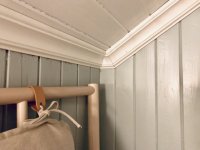escapegoat
Member
I picked up a Carvex from the Recon site recently. I would describe my needs as "general homeowner usage". My immediate use cases are
(1) scribing and quick cuts for some built-ins I'm working on, and
(2) cutting thin aluminum sheet metal (with a bimetal blade)
I don't have a specific need for the angle base right now, but is it something I should have on hand anyways? My first Festool was a CXS drill, and I've always regretted not ordering the combo that included the right angle attachment. Will I sleep better at night knowing that the angle base is in my Systainer?
(I'd prefer this not turn into a discussion on the merits of the Carvex angle base versus the tilting capabilities of other jigsaw models. I think that's been covered extensively in other threads). I'm happy with my Carvex
(1) scribing and quick cuts for some built-ins I'm working on, and
(2) cutting thin aluminum sheet metal (with a bimetal blade)
I don't have a specific need for the angle base right now, but is it something I should have on hand anyways? My first Festool was a CXS drill, and I've always regretted not ordering the combo that included the right angle attachment. Will I sleep better at night knowing that the angle base is in my Systainer?
(I'd prefer this not turn into a discussion on the merits of the Carvex angle base versus the tilting capabilities of other jigsaw models. I think that's been covered extensively in other threads). I'm happy with my Carvex

